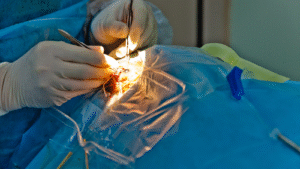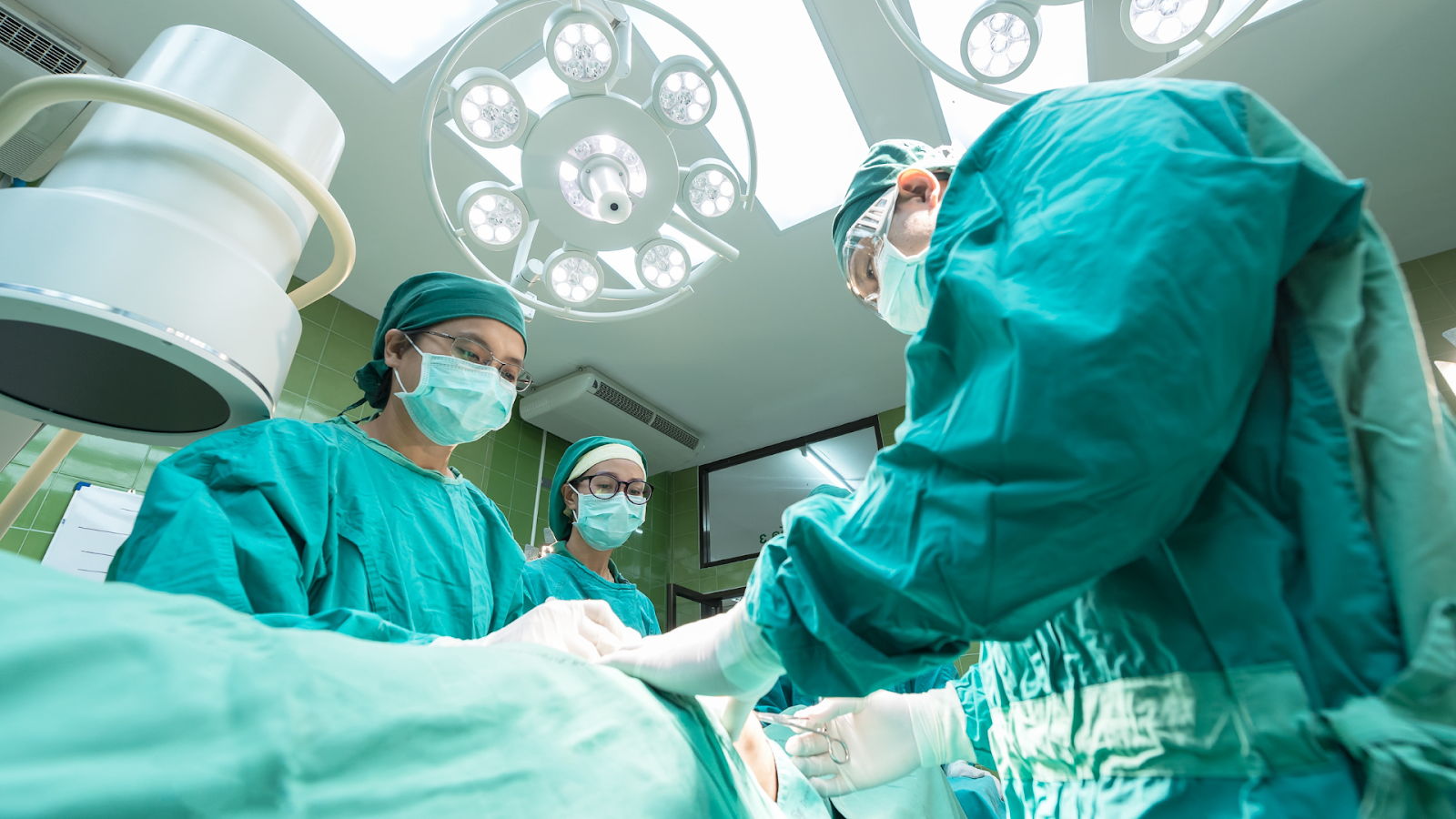Cataract surgery is one of the most commonly performed and safest eye procedures globally, restoring clear vision to millions of patients annually. With a success rate of approximately 98.5%, most individuals experience significantly improved vision within days of the operation. However, for some patients, the period following the surgery can bring about unexpected issues, particularly blurry vision. While often temporary and part of the natural healing process, blurry vision can also signify complications that may require medical intervention.
This comprehensive blog aims to explore the causes of blurry vision after cataract surgery and provide detailed, patient-friendly solutions to ensure optimal recovery and visual clarity.
Understanding Cataracts and Cataract Surgery
Cataracts form when the proteins in the eye’s natural lens clump together, creating cloudy areas that interfere with light entering the eye. This results in symptoms like blurred vision, glare, halos around lights, difficulty reading, and a general decline in visual acuity. Cataracts typically progress with age and can severely impact daily life if left untreated.
Cataract surgery involves removing and replacing the clouded natural lens with a clear artificial intraocular lens (IOL). This is an outpatient procedure conducted under local anaesthesia. While it is relatively quick and safe, the eye needs time to adjust to the new lens and heal properly.
During this healing phase, some degree of blurry vision is expected. However, understanding when and when it’s normal is crucial for identifying any underlying problems early on.
Eye Problems After Cataract Operation and Their Solutions

Cataract surgery is a highly effective and widely performed procedure that restores clear vision by replacing a clouded lens with an artificial one. While most patients recover smoothly, some experience complications that may affect their vision temporarily or require medical intervention.
Understanding these possible issues helps in early detection and treatment, reducing the risk of long-term damage.
1. Infection (Endophthalmitis)
In rare cases, bacteria can enter the eye during or shortly after surgery, leading to a serious infection known as endophthalmitis. Symptoms may appear within days and include eye pain, redness, light sensitivity, discharge, and blurred vision.
2. Inflammation
Mild inflammation is common and expected after surgery, often presenting as redness or a scratchy feeling. However, some patients may experience more significant swelling or discomfort.
3. Retinal Detachment
The retina, a thin layer of tissue at the back of the eye, can sometimes pull away from its normal position after cataract surgery, especially in those with high myopia or past eye injuries. Symptoms include flashes of light, a sudden increase in floaters, or a dark curtain over part of your vision.
4. Lens Fragments Left in the Eye
During cataract surgery, small fragments of the natural lens may accidentally be left behind in the eye. These can irritate the eye or cause inflammation if they are large or numerous.
5. Fluid Buildup in the Retina (Cystoid Macular Edema)
Fluid may leak from retinal blood vessels and collect in the macula—the part of the retina responsible for sharp central vision—leading to blurry or distorted vision. This is more likely in patients with diabetes or those who have had complicated surgeries.
6. Dislocated Intraocular Lens (IOL)
The artificial lens implanted during cataract surgery can sometimes move out of its intended position. This dislocation may lead to blurry or double vision and, in severe cases, swelling or bleeding.
7. Secondary Cataract (Posterior Capsule Opacification)
Months or even years after surgery, the back of the lens capsule left behind can become cloudy, mimicking the symptoms of a cataract. This is known as posterior capsule opacification (PCO), often referred to as a secondary cataract.
8. Swelling in the Cornea
The cornea, the eye’s clear front surface, may temporarily swell after surgery, making vision appear hazy or foggy. This condition is usually caused by surgical trauma or prolonged exposure to ultrasound during lens removal.
9. Bleeding (Hyphema or Retinal Hemorrhage)
Although rare, bleeding may occur during or after surgery. Blood vessels in the retina or between the iris and cornea can break, leading to visible blood inside the eye and temporary vision loss.
10. Floaters and Flashes
After cataract surgery, some patients notice floaters—tiny specks or strands that drift across their vision—or flashes of light. These are often due to posterior vitreous detachment, where the gel-like substance inside the eye separates from the retina.
11. High Eye Pressure (Ocular Hypertension)
Cataract surgery can sometimes lead to elevated pressure inside the eye. This may be due to inflammation, retained lens fragments, or medication side effects, and can increase the risk of developing glaucoma.
12. Light Sensitivity
Sensitivity to bright light is fairly common after cataract surgery. However, if it persists, it may be a sign of underlying inflammation or corneal edema.
13. Droopy Eyelid (Ptosis)
The upper eyelid may temporarily droop after surgery due to swelling, anesthesia effects, or instrument pressure.
14. Dysphotopsia (Visual Disturbances)
Dysphotopsia involves seeing unwanted visual effects after surgery. Negative dysphotopsia appears as dark shadows or arcs in the peripheral vision, while positive dysphotopsia includes halos, streaks, or starbursts.
When to Contact an Eye Doctor

While mild blurry vision after cataract surgery is part of the normal healing process, it is crucial to be vigilant and recognise signs that indicate something may not be right.
If you experience any of the following symptoms, contact your eye doctor immediately:
1. Vision Does Not Improve After 1 to 2 Weeks
Blurry vision that persists for over two weeks may point to a problem beyond routine healing. While everyone heals at a different pace, most patients notice gradual improvement in their sight within the first few days.
2. Sudden Drop in Vision
A sudden and significant decline in vision, particularly after initial improvement, should never be ignored. This could be a sign of cystoid macular edema (CME), retinal detachment, or infection.
3. Severe Eye Pain or Persistent Redness
Mild discomfort or irritation is common after surgery, but severe or prolonged pain is not. Similarly, a slight redness in the eye is expected in the first couple of days. Still, persistent redness could indicate inflammation, infection, or other complications like endophthalmitis (a rare but serious infection inside the eye).
4. Flashes of Light, Floaters, or a Shadow in Vision
Seeing new flashes of light, an increase in floaters (small shapes drifting across your visual field), or the appearance of a dark curtain or shadow across part of your vision may signal a retinal detachment, a rare but urgent condition. These symptoms typically come on suddenly and can worsen quickly.
5. Double Vision or Increased Light Sensitivity
Seeing double or developing extreme sensitivity to light (photophobia) are unusual symptoms following cataract surgery. These could be related to misaligned intraocular lenses, corneal edema (swelling), or inflammation inside the eye.
Early diagnosis and treatment of complications can prevent long-term damage and ensure a successful recovery.
Also read: What is Eye Pain? Causes and Treatment Options
Tips for Supporting a Smooth Recovery
Taking good care of your eyes after surgery can significantly reduce the risk of complications:
- Follow the Medication Schedule: Please use your prescribed antibiotic and anti-inflammatory eye drops exactly as directed. Skipping doses can slow healing or increase your risk of infection.
- Protect Your Eyes: Use sunglasses to shield your eyes from UV rays. At night, wear the eye shield provided by your doctor to prevent accidental rubbing during sleep.
- Avoid Strenuous Activities: During the initial recovery period, refrain from heavy lifting, bending over, or engaging in strenuous physical activity to prevent increased eye pressure.
- Maintain Hygiene: Wash your hands before applying eye drops. Avoid swimming pools, hot tubs, and eye makeup until your doctor gives the all-clear.
- Stay Hydrated and Rested: Drink plenty of water and get adequate sleep. General wellness is vital to how well and quickly your eyes recover.

Conclusion
Experiencing eye problems after a cataract operation can be unsettling, but many issues like blurry vision, dry eyes, or inflammation are common and often temporary parts of the healing process. In some cases, conditions such as posterior capsule opacification (PCO) or cystoid macular edema (CME) may develop, but these are typically treatable when addressed early.
The most important step is to stay in close contact with your ophthalmologist. Attend all follow-up appointments, report any unusual symptoms, and follow your post-surgery care instructions carefully. With the right support, your vision can become clearer and more comfortable than it has been in years.
If you’re recovering from cataract surgery or exploring vision correction procedures such as LASIK, lens replacement, or pterygium removal, The Vision Surgeon offers advanced and personalised care. Led by Mr. Hatch Mukerjee, our clinic combines modern laser technology with tailored treatment plans to ensure safe and effective outcomes.
Whether you are managing post-cataract concerns or planning for improved vision, our team is here to support you from your first consultation through to full recovery.
Book your consultation today to find out why patients across Essex, Colchester, and nearby areas choose us for expert eye care.
